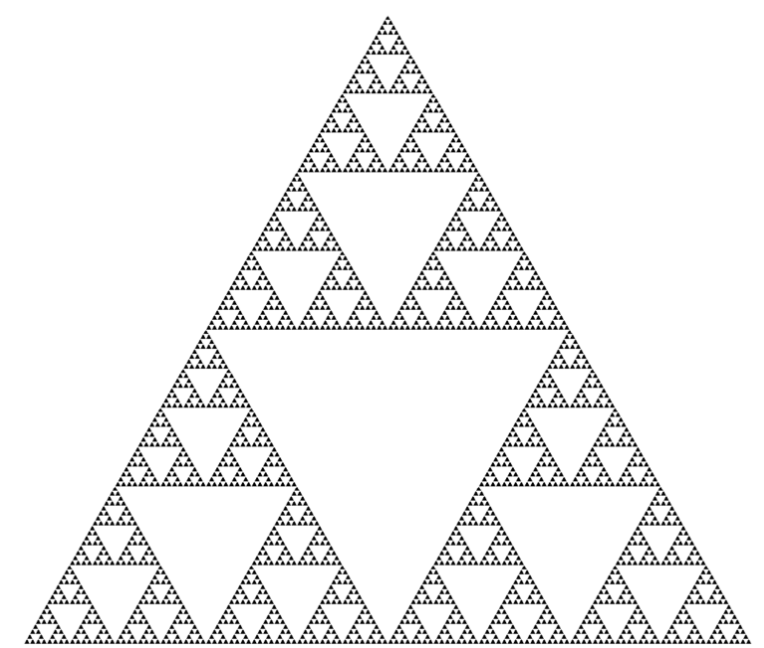Greetings to readers. This is my first article on Habré. In it, I would like to share my experiments with the algorithm for constructing fractals by placing points in certain coordinates.
I do not exclude that you may already understand the topic of fractals, and even worked with the algorithm, which I will talk about, and that there is a lot of information about this, although I did not find any experiments with it. So don't hit ...
Let's start with a story about the Sierpinski Triangle. This is a fractal, that is, as the erroneous wording says - a self-similar figure (whose parts are similar to the figure itself). You've probably seen the Sierpinski Triangle.

There is a way to create it, which we will repeat in the Python programming language. The algorithm itself looks like this:
. , . : , .
This picture is from a program that I wrote in Python in a couple of minutes. I used the pyxel library because I like it, it looks nice, but as it turns out later, it has insufficient resolution, which in our case will make it difficult to distinguish small elements of the fractal.
...
. , , ( ). - , .
...
, . , , , 3 . , . ( , , - ).
...
, , 1.n, - 1.75 . - .
, 5 , , - 1.5 ?
, , pygame, , 240 , , , , , - .
. - .
1.75, .
, , - , -.
...
.
, , , - - - . , "" - . .
- C++ C# ( Assembler?), , - , , - , , , , . , , ...
, . , /, .
.